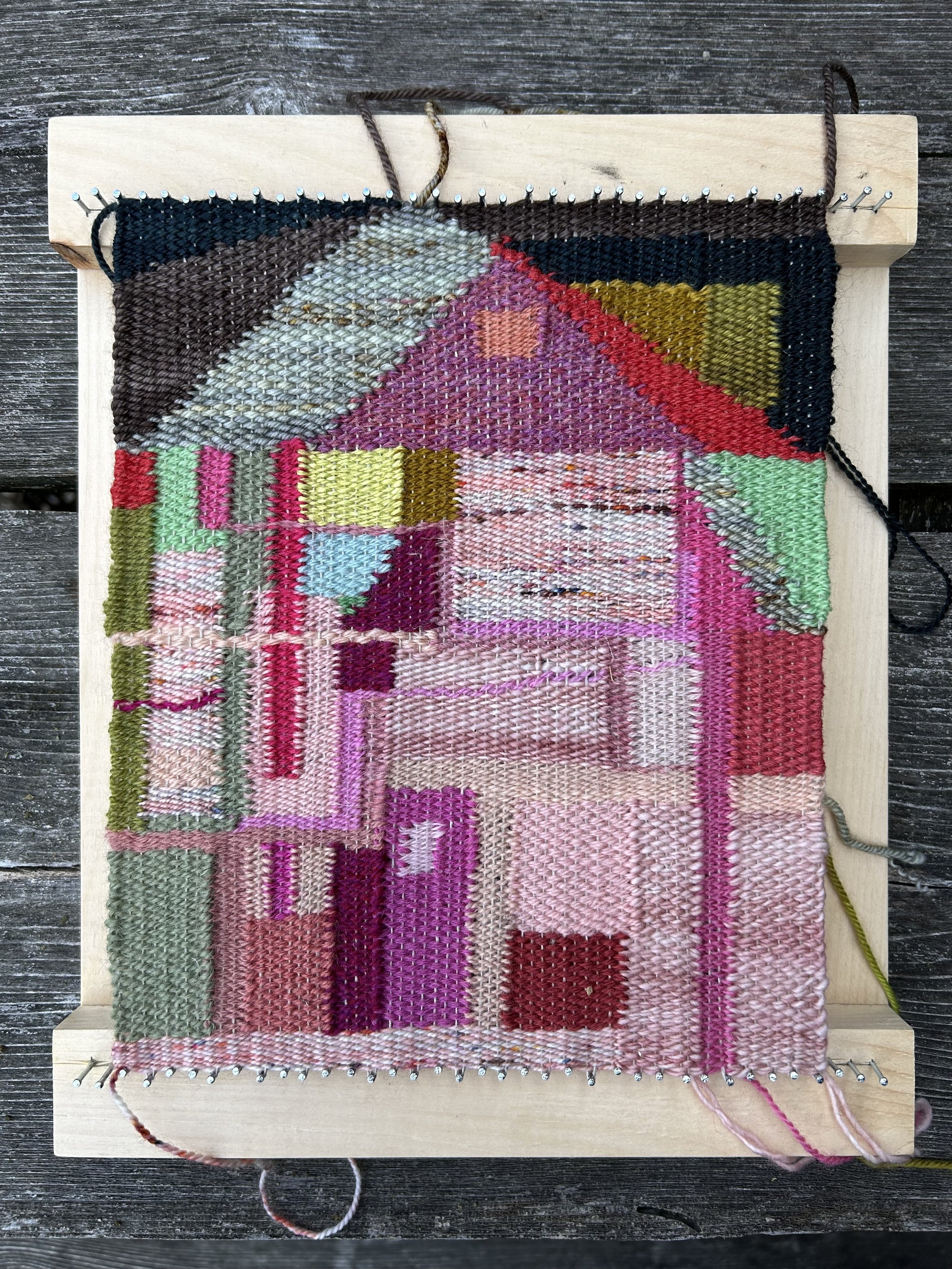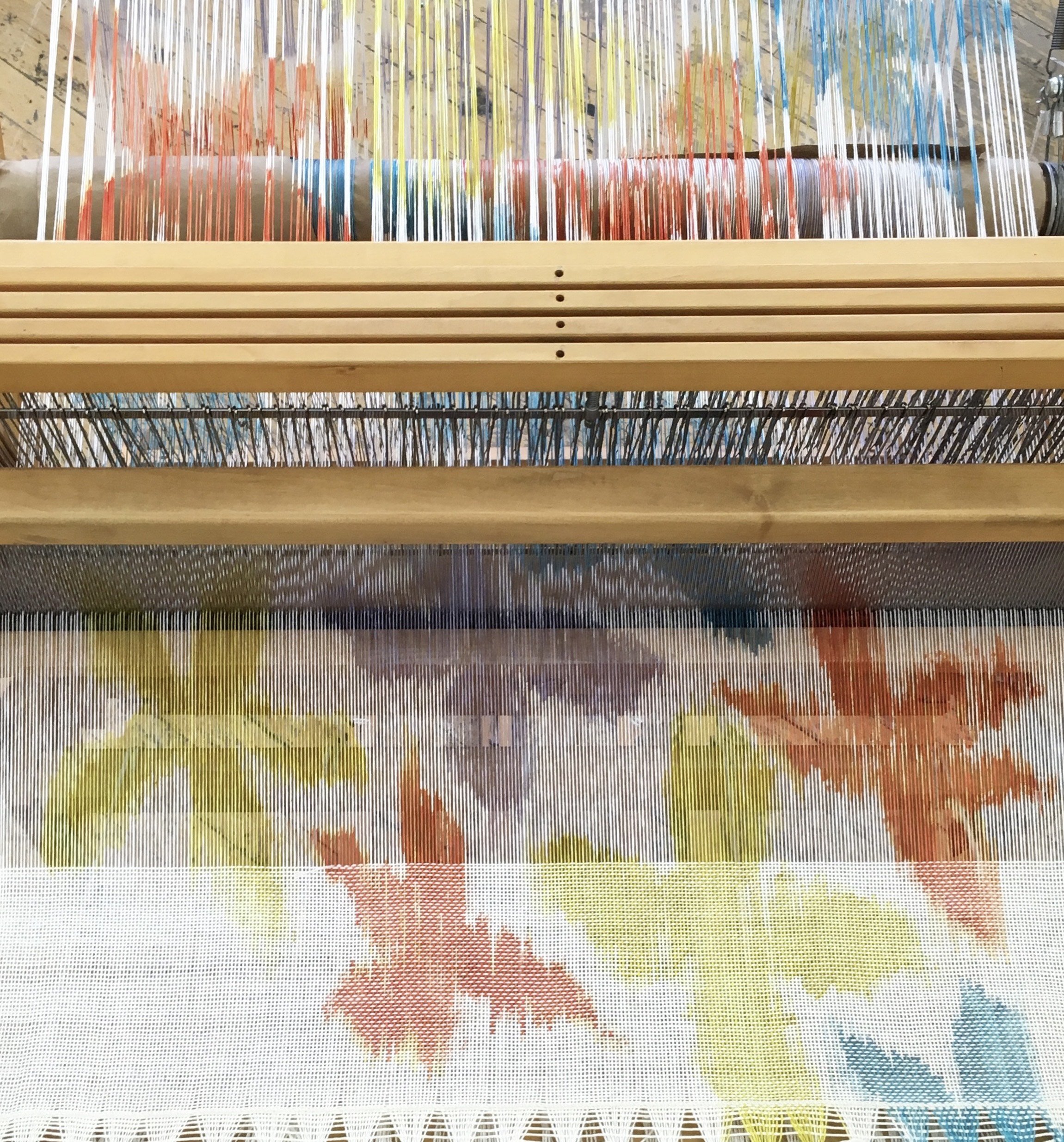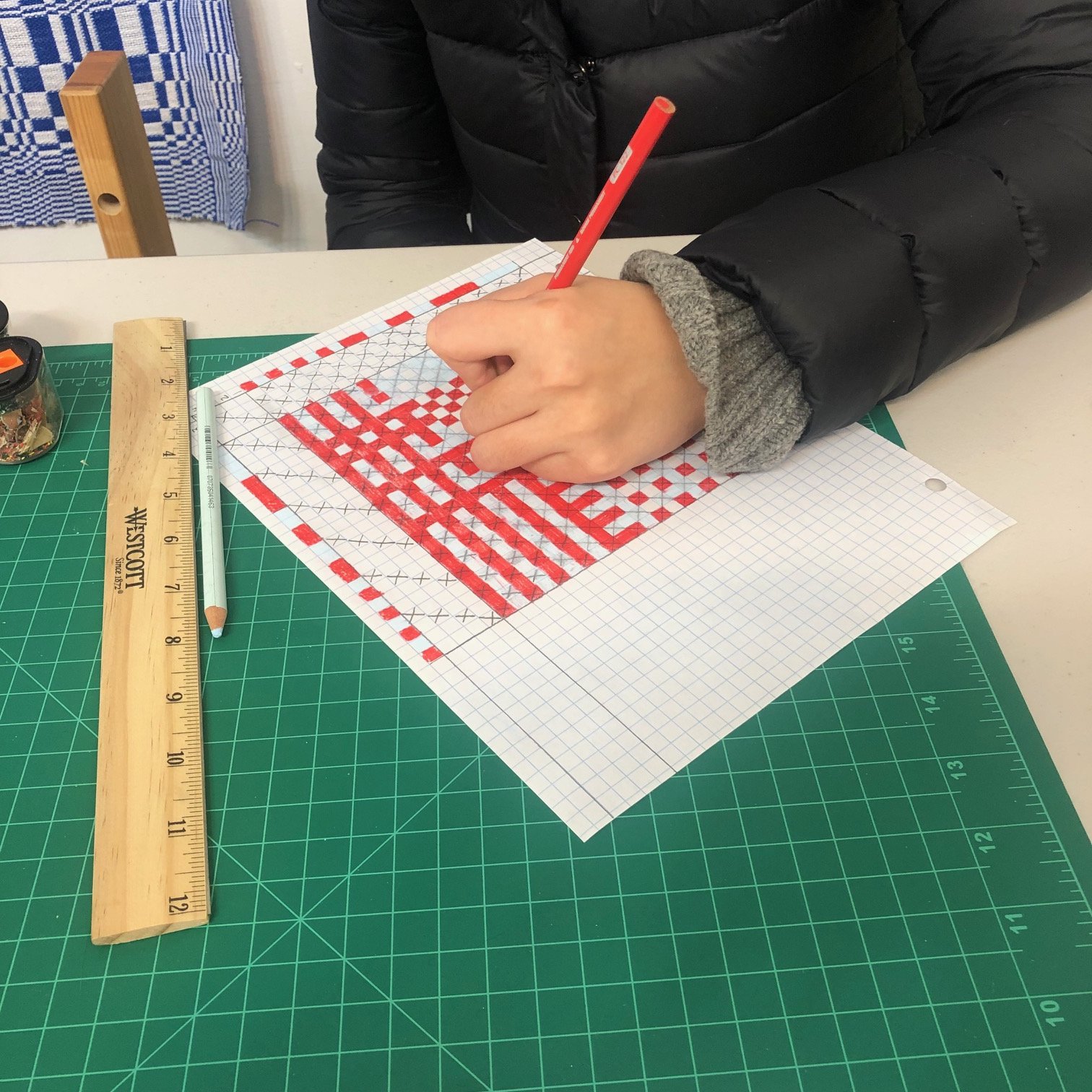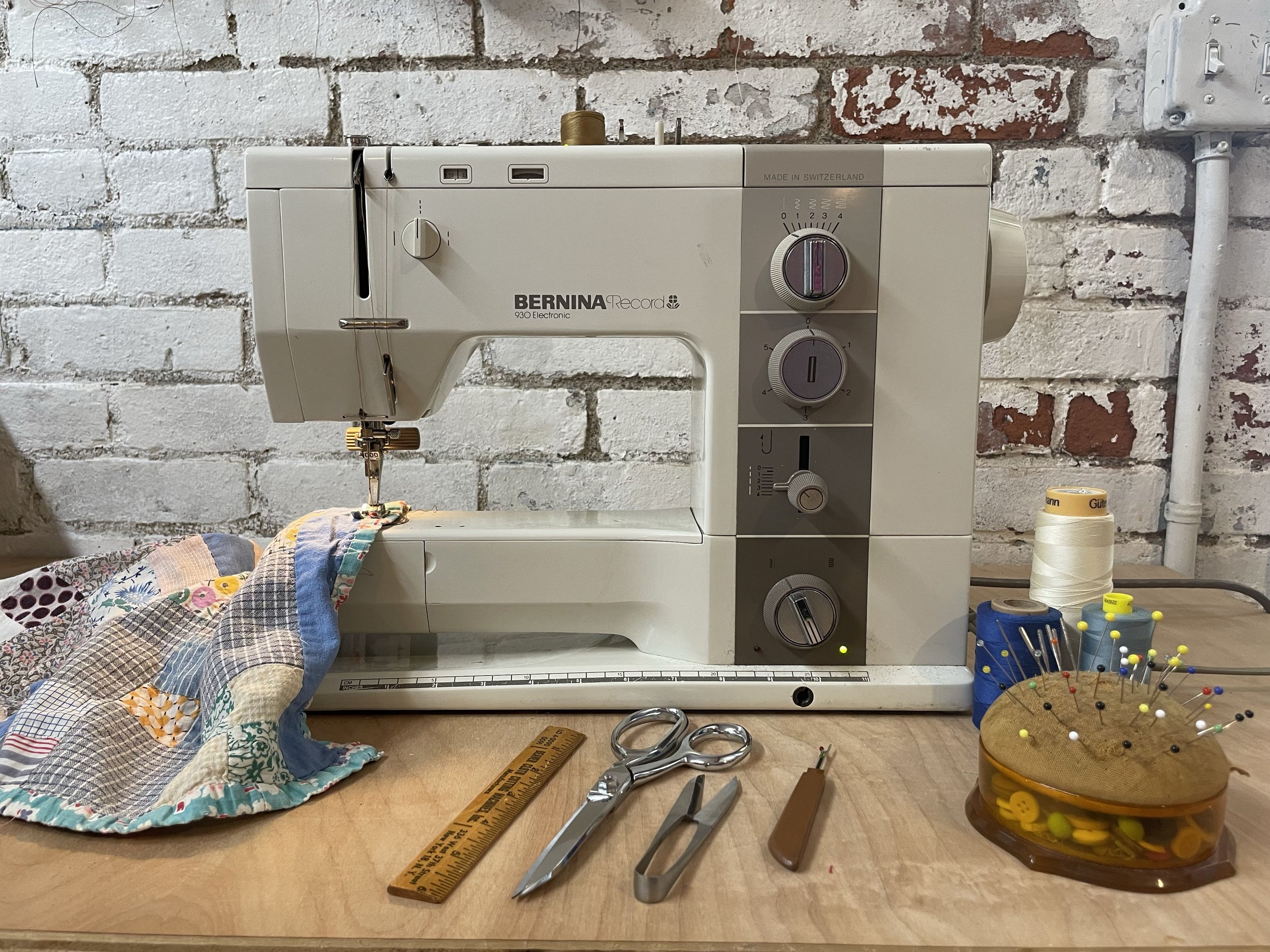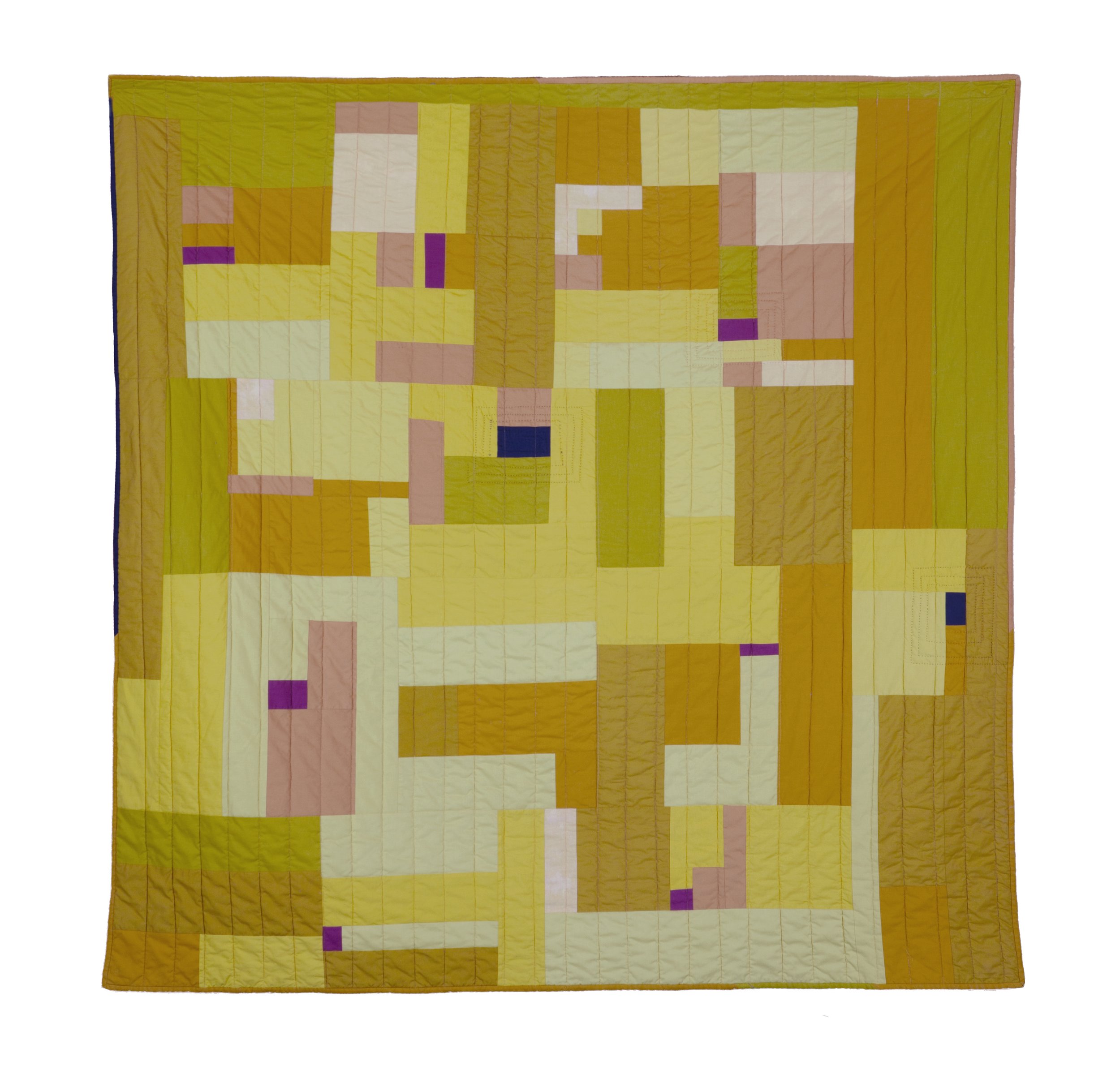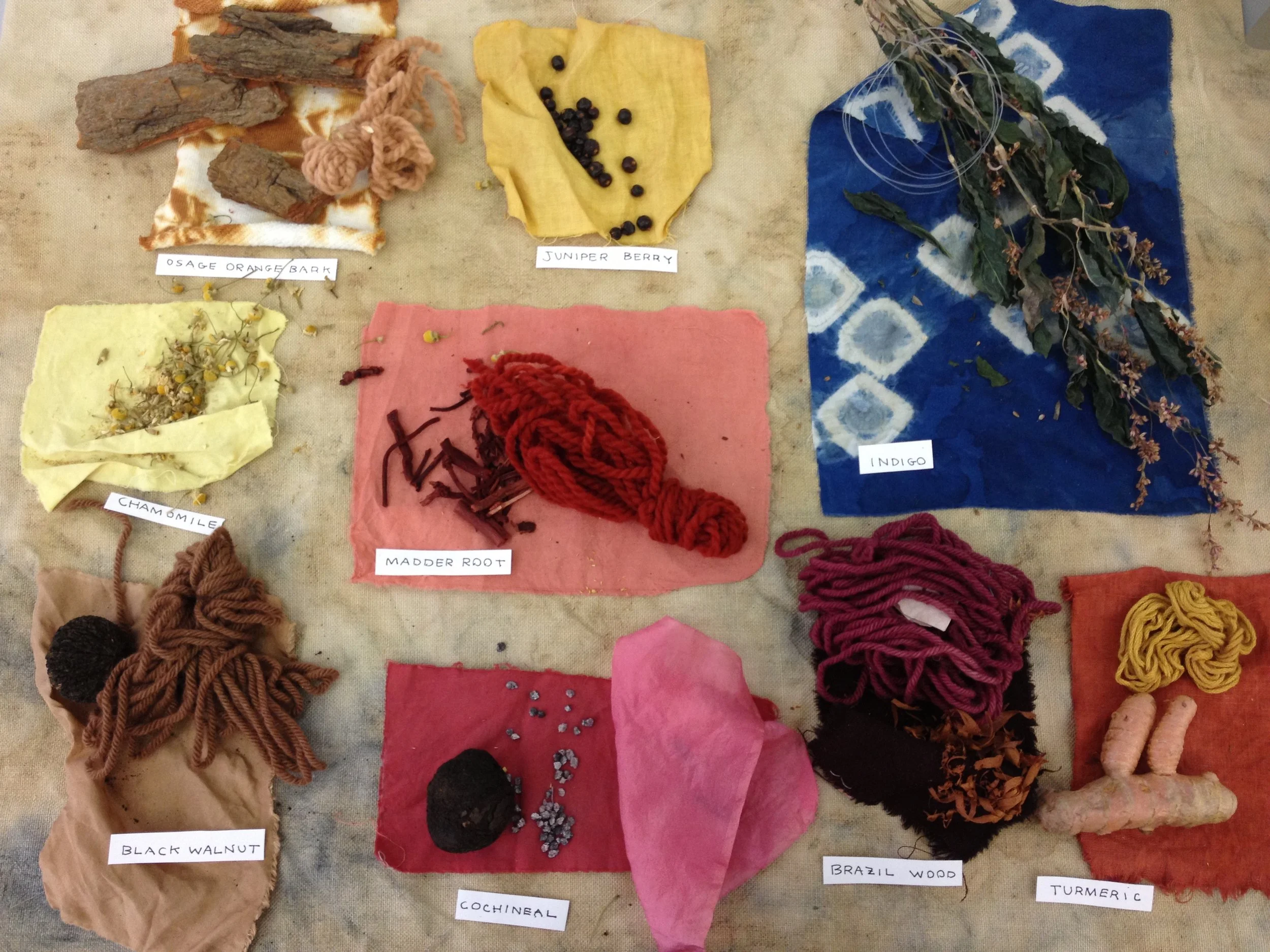
Class Descriptions
Introduction to Weaving
Introduction to Weaving begins with the basics of hand-weaving using a Schacht Wolf Pup 4-harness floor loom. On the first day, participants will learn how to wind a warp and set up their own looms. The second day will cover how to weave, basic weave structures such as plain weave, baskets, twills, and some tapestry techniques. The class will conclude with cutting off and finishing the edges of your weaving. This class can be taken multiple times with a different project variation each time. This class is designed for those new to weaving as well as for those with some experience but want a refresher. All materials and equipment are provided.
Level: Beginner / Advanced Beginner
Image: Zenona Darrow
Introduction to Weaving: Color
Introduction to Weaving: Color is a beginner / advanced beginner level class for all lovers of color! Explore and analyze different warp and weft color combinations through learning how to weave a traditional color gamp project. Each participant begins by selecting colors from a wide variety of mercerized and mercerized cotton threads, designing and winding a warp, and setting up their own 4-harness Schacht loom. The second day will cover how to weave. Basic weave structures will be taught such as plain weave, baskets, twills, and selected hand-manipulated weaves. The class will conclude with cutting off and finishing the edges of your weaving. This class is designed for those new to weaving as well as for those with some experience. All materials and equipment are provided.
Level: Beginner / Advanced Beginner
Image: Lauren Colbert
Abstract Tapestry Weaving
Abstract Tapestry Weaving will cover the basics of abstract tapestry weaving on a Schacht 4-harness floor loom. During the first day of the class, participants will learn how to wind a warp, set up their own floor looms, and how to weave basic plain weave. During the second- and third-day participants will be taught various weft-faced and open weave tapestry techniques, using woven examples and visual references such as the work of Sheila Hicks as inspiration. The emphasis is on abstract patterning and innovation (as opposed to following a pre-planned cartoon). The class will conclude with finishing off the edges of the weaving and studio clean-up. All materials and equipment are included, but feel free to bring any additional weft material that you would like to experiment with.
Level: All levels
Image: Weaving by Margot Becker
Tapestry Weaving on a Frame Loom
Tapestry Weaving on a Frame Loom will cover the basics of weft-faced tapestry techniques as well as setting up and weaving on a Schacht tabletop frame loom. The frame loom is a simple, portable tool which can be used to make wall hangings or small textile squares to be pieced together into a larger project. This is the perfect class for the very beginner weaver. During the first part of the class, participants will learn how to warp their loom and be introduced to plain weave as well as a variety of weaving techniques, such as clasped weft, slit weave, lace weaves, and hatching. After a lunch break, the focus will be on weaving a larger project and more one-on-one feedback based on individual direction. The day will conclude with learning a hem stitch to finish off the weaving and studio clean-up. All materials and equipment are included, but feel free to bring any additional weft material that you would like to experiment with.
Level: All levels
Image: Margot Becker
Experimental Weaving on a Frame Loom
This class is an intuitive and fine arts approach to weaving, open to beginners or anyone interested in non-functional textile art and image-making. Two full days will provide you with the basic foundational skills and practice to create your tapestry weavings on a frame loom. Discussion and demonstrations will include the dynamics and options of the warp and weft, as well as options in mounting finished tapestry weavings. Experimental and non-technical methods will focus on process, materials as metaphor, and the poetics of design and color. This is a great class for those interested in bringing the language of painting and drawing into the weaving tradition. Each participant will take home a small, hand-made frame loom, which will be included in the cost of this workshop, so you can easily continue this weaving practice. Feel free to bring your favorite scraps of textiles, yarns and/or found objects to include in your weavings (optional).
Level: Beginner / Advanced Beginner
Image: Jen Simms
Woven Patterning by Hand
Woven Patterning by Hand is a two-day introductory-level class focused on hand-manipulated weave structures. On the first day, students will learn how to wind a small warp and set up a 4-harness loom. Students will get started on the loom by learning plain weave and the basics of loom mechanics. On the second day, students will be introduced to techniques for patterning by hand including inlay, leno lace, brooks bouquet, and Danish medallion and will be encouraged to sample and play. By the end of the second day, students will cut off their work and learn how to finish the edges of their weaving. This class is designed for students who are new to weaving on a shaft loom as well as those with some previous experience who want to explore new techniques.
Level: Beginner / Advanced Beginner
Image: Etta Sandry
Warp Painting Weekend Intensive
Warp painting is an exciting way to explore color and surface design in weaving. In this class, we will explore different techniques for creating imagery and patterns through warp painting and discuss different types of paints and dyes according to the type of fiber and application. Each student will learn to set up their own loom (from front to back) with a pre-wound cotton warp and create a small piece based on their vision. This class is designed for students who are new to weaving on a shaft loom as well as those with some previous experience who want to explore new techniques.
Level: All levels
Image: Isa Rodrigues
Introduction to Weave Drafting
Weave drafting is the pattern notation unique to weaving on a shaft-loom. In this introductory-level workshop, participants will learn how to read, modify, and create their own drafts from scratch. During the first session, participants will be shown examples of 4-harness drafts and be led through several drafting exercises intended to gain confidence with the basics. During the second session, participants will create an individualized sample blanket draft with color, and other common drafting scenarios will be discussed. This course is intended for people new to drafting that have some experience with weaving. Required materials: ¼” graph paper, 1/8” graph paper (optional), pencil / eraser, and colored drawing media. Recordings are available upon request.
Level: Beginner
Experimental Weave Drafting
Weave drafting is the pattern notation unique to weaving on a shaft-loom. In this three-session online class, participants build on what they learned in Introduction to Drafting as they are guided through a series of experimental exercises to generate their own weave drafts. This includes, creating your own Overshot draft from scratch using name drafting, generating an aperiodic draft with chance operations, and reverse engineering a weave draft from a drawdown. During the second session, the class will be joined by artist and educator, Etta Sandry, who will present on their experimental approach to weaving and drafting, followed by a Q & A. Basic instruction will be given on how to use the free online drafting software Treadl as well as Fiberworks, both as possible alternatives to drafting using pencil and graph paper. Participants are encouraged to download one or both in advance of the first session. Recordings are available upon request for those who are not able to make the scheduled classes.
Level: Advanced beginner / Intermediate
Image: Name drafting / Overshot
Introduction to Machine Sewing
Introduction to Machine Sewing is designed for absolute beginners who want to learn to sew! Learn the basics of machine sewing so you can incorporate sewing into your creative practice, have a handy skill, or go on to learn quilting and/or apparel construction! We will learn how to set up our machines, the parts and supplies, different stitches, basic troubleshooting as well as tips and techniques for new sewists. We will sew a simple tote bag with french seams with options to add patches or pockets. Students will leave with the foundational skills of machine sewing as well as an understanding of fabric construction and how to source and prepare materials. If you have some sewing experience but the machine still feels like a struggle, this is a good class to refresh your skills! Level: Beginner
Image: Courtesy of Anna Svoboda-Stel
Hand Quilting
In this three-hour class students will learn the fundamentals of hand quilting. Fine traditional stitches and bolder ‘big stitch’ hand quilting will be covered in class so students can explore both techniques and get a sense of how their application differs. We’ll begin with a review of proper preparation and basting of the layers of a quilt then move on to marking and best practices for hand stitching. Participants will have the opportunity to experiment with marking tools, different needle sizes and a variety of thread weights. Hoops will be available for those who wish to learn about hoop positioning and fabric tension. Participants are welcome to bring a completed quilt top along with them for instruction on hand quilting, but please contact the instructor ahead of class. No prior hand stitching experience is necessary. All materials will be provided.
Level: All levels
Image: Susan Chiappini
Improvisational Quilt Workshop
Improvisational Quilt Making: It’s a freeing creative process meant to allow students to play with the unexpected. No rigid patterns, templates or precision measuring here. Instead, we’ll work in a loose and freeform quilting style focusing on the creative process while maintaining solid design concepts.
Students will sew patchwork quilt blocks without the limitations of traditional patterns with results that are often surprising and unexpected. The morning will focus on creating liberated patchwork blocks. In the afternoon we’ll move on to design elements that can help create a cohesive overall quilt top.
Level: All levels
Image: Susan Chiappini
Visible Mending
Darning is the technique of mending a hole in cloth by stitching and interweaving yarn by hand. The process incorporates basic stitching and weaving to create beautiful, functional repairs. We will move through the mending process from start to finish, learning various stitches, weaving patterns, and experimenting with color along the way. In this 3-hour workshop, participants will learn the basics of visible mending by first practicing on provided fabric with a small cutout. If time allows, participants can start a second project to completed at home, either on a personal garment or a larger piece of fabric.
Level: Beginner
Image: Sophia DeJesus-Sabella
Introduction to Natural Dyeing
This one-day workshop delves into beautiful, accessible, and sustainable natural dyes for both protein and cellulose fibers. Starting with best practices of fiber preparation, we’ll then extract color for 24 swatches in a rainbow of hues. This process will demystify mordants and address the all-important question of longevity! All fibers and dyes will be provided for a mini swatch library. Participants are welcome to bring one additional pre-washed garment, skein, or yard of natural fiber for a personal project. We’ll discuss safety considerations, foraging ethics, and the colorful history of natural dye use. Participants are asked to wear studio-safe clothing; we might get messy!
Level: All levels
Image: Natalie Stopka
Natural Dyeing Weekend Intensive
In this workshop, participants will learn the foundations of working with natural color on textiles, while discussing natural dye materials' history, chemistry, and sustainability. Over the two days, participants will learn the basics of mordanting, dye extraction, dyeing techniques, color modifications, and setting up an indigo vat, to collaboratively create a natural dye color sampler. We will work with natural dyes with a rich history of use in North America, such as madder, osage orange, black walnut, and the magical indigo. Other options for natural dye materials, such as food waste, invasive plants and other, will also be discussed for future exploration. All materials will be included, however, students are encouraged to bring small quantities of textile materials/garments for independent exploration.
Level: All levels
Image: Isa Rodrigues
Introduction to Marbling
This class is an introduction to the fascinating and historied art of water marbling. Marbling is a process in which paints are floated on a liquid surface and worked into patterns using different methods and tools. The marbled pattern is then transferred to paper, fabric, or object. In the first half of the class, participants will begin by playing with different approaches to applying color and pattern to the marbling vat, trying out different tools, rakes, and a stylus to “paint” on the marbling liquid and create images. We will cover how to choose the correct materials and how to prepare them for the optimal marbling experience. Each participant will have several sheets of paper to practice these different marbling techniques. During the second portion of the class, there will be a discussion around color theory, and everyone will have the opportunity to create a personal color palette and marbling vat. These more refined and planned marbled designs will then be transferred onto high-quality fabric that can be used in the creation of future projects. All materials and equipment will be provided.
Level: All levels
Image: Claire Reynes
Artist Lecture Series: Weaving in Contemporary Art (Winter / Online)
This 5-session series presents weekly lectures by artists and designers that work with weaving as a primary medium in their practice. Collectively, their work spans computer-assisted and industrial jacquard weaving, dobby weaving, tapestry, and handweaving on a floor loom. Each week a different speaker has been invited to discuss the concepts, process, techniques, and materiality, that are specific to what they do. This is intended to be an opportunity to connect with fellow weavers (and weaving admirers) in a virtual setting. Each presentation will be followed by a brief Q&A. Supplemental reading materials and online links will be provided in advance of each week to provide background and context for each artist. Recordings will be available for a limited time following each weekly lecture for those who are not able to attend live.
2025 Presenters: Paolo Arao, Liz Collins, Craftwork, kg, and Emily Winter
2024 Presenters: Diedrick Brackens, Dee Clements, Christy Matson, Jovencio de la Paz, and Erin M. Riley
Textile Topics: Color
This 5-week online course meets weekday evenings and focuses on color as it pertains to textiles. Each week a new topic is presented by a guest lecturer within their area of their work and research. The topics include: Anni and Josef Albers in Color, the Biology and Physics of Color, Natural Dyes, Global Pigment Histories, and ‘Color Vision’ and Jacquard Weaving. In addition to weekly presentations, there will be a weekly reading chosen by the presenter and a lengthy Q&A. This course is intended for anyone who wants an in depth look at the culture around color beyond a “how-to” workshop, and is intended for people interested in many types of textiles, not just weaving.
Presentations:
“Anni and Josef Albers in Color: Thread, Paint, and Print” by Fritz Horstman
“The Physics and Biology of Color Perception” by Eric Hibit
“Natural Dyes: The Artistry of Living Color” by Natalie Stopka
“In Living Color: Pigments in the Past, Present, and Future” by Julia Norton
“‘Color Vision’ and Jacquard Weaving” by Sarah Wertzberger





